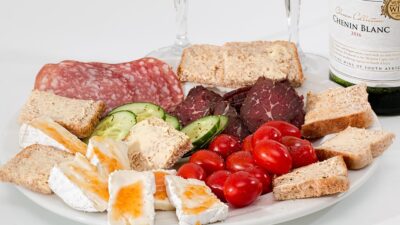Whether you’re a professional chef or a passionate home cook, the way food is presented can elevate a meal from ordinary to extraordinary. Food styling is both an art and a science, tapping into aesthetics and psychology to enhance the dining experience. In this article, we’ll explore essential tools and techniques that can help you master food styling and tantalize your audience with visually stunning presentations.
Tools of the Trade
1. Plating Tools
-
Tweezers: Precision tweezers are invaluable for placing delicate elements like microgreens or edible flowers without disturbing the rest of the dish.
-
Squeeze Bottles: Ideal for sauces and purées, squeeze bottles help in creating clean lines and artistic drizzles around the plate.
- Spatulas and Scrapers: These are helpful for smoothing out sauces and removing any excess food on the plate for a clean finish.
2. Dishware and Props
-
Plates and Bowls: Invest in a variety of shapes, sizes, and colors. Textured or patterned dishes add depth, while simple white plates allow colorful foods to take center stage.
-
Cutting Boards: Wooden or stone cutting boards can double as rustic serving surfaces. They also enhance the visual appeal with a natural backdrop.
- Textiles: Napkins, tablecloths, and placemats in complementary colors or textures can frame your dish beautifully and add warmth to the presentation.
3. Lighting Equipment
-
Natural Light: Whenever possible, use natural light to style your food. It brings out the colors and textures more vividly than artificial lights.
- Reflectors: Simple and inexpensive, reflectors can help bounce light onto your dish, highlighting its best features.
4. Garnishing Tools
-
Microplane: Perfect for grating citrus zest or hard cheeses, microplanes help in adding fine details that can enhance flavors and appearance.
-
Knife Sets: A professional-grade knife set ensures clean cuts for vegetables and proteins, which is crucial for presentation.
- Scissors: Kitchen scissors can be used for cutting herbs or even adjusting the shapes of food for a more polished look.
Techniques for Stunning Food Styling
1. The Rule of Thirds
When plating, consider this classic composition technique. Divide your plate into thirds, visually placing focal points or ingredients along these lines or their intersections to create balance and interest.
2. Height and Layers
Creating height adds dimension to your dish. Stack ingredients, use tall garnishes, or incorporate vertical elements like skewers to move the eye upward. Layering can also bring complexity to the presentation.
3. Color Contrast
Utilize a variety of colors to make plates pop. A vibrant garnish can brighten up a bland dish, while complementary colors can create a harmonious presentation. Think about the color wheel when planning your dishes.
4. Negative Space
Don’t overcrowd your plate. Embrace negative space to highlight your food. The empty areas draw the eye to the important elements and can make the platter look more sophisticated.
5. Textural Contrast
Pair different textures within a dish—smooth sauces with crunchy toppings, creamy elements with crispy garnishes. This not only appeals visually but also engages the palate.
6. Drama with Different Angles
Experiment with different angles when photographing your plated food. Overhead shots are great for flat dishes, while a 45-degree angle can enhance height in more dimensional compositions.
Putting It All Together
Food styling is a valuable skill that can transform your culinary creations and create unforgettable dining experiences. With the right tools and techniques, every chef can learn to style their food beautifully.
As you experiment with various plating styles and presentations, remember that practice makes perfect. So, don your aprons, grab those tweezers, and start styling. After all, a feast for the eyes is a feast for the soul, and every dish tells a story worth sharing. Happy styling!



